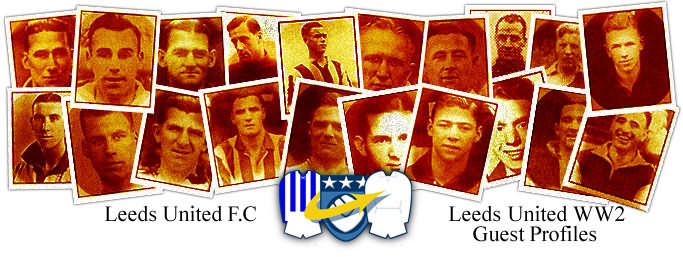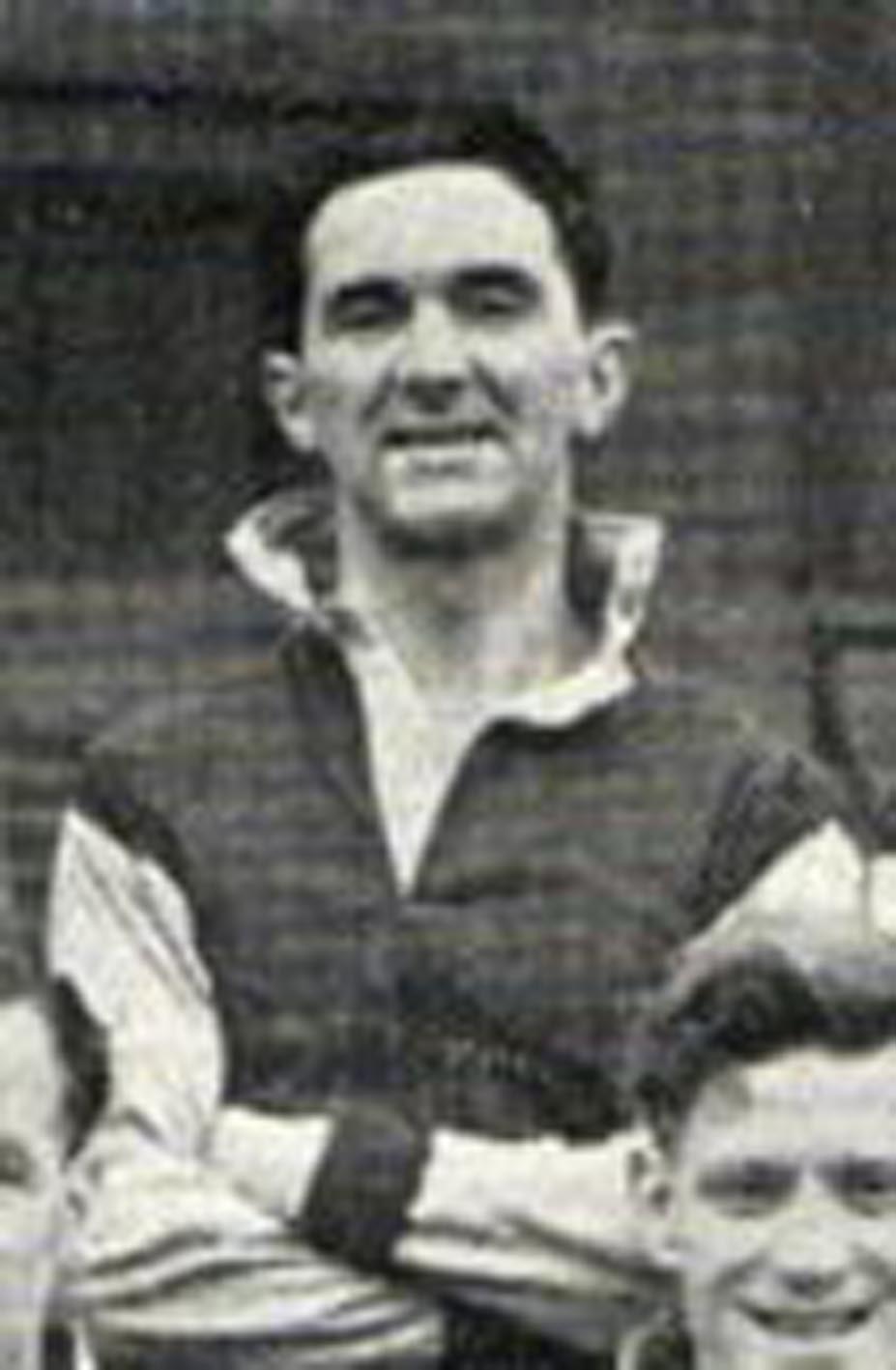

Attwell: Frederick Reginald (Reg)
WW2 Guest: 1942-1943
(Leeds United War-time Guest Player Details)
Wing Half
Born: Shifnal, Shropshire: 23-03-1920
Debut: v Blackburn Rovers (h): 28-02-1942
Height & Weight: Unknown
Attwell started with Non-League Denaby United, before joining West Ham United, who he
served from 1937 until 1946, but due to the Second World War made only five appearances for
them. He only played once before the War, on 23rd April 1938 in a Second Division fixture
at Sheffield United, when the Hammers went down 3-1 in front of a crowd of 30,000. During
the War he served with the Essex Regiment and played a total of forty-nine games for the
Hammers but he never scored a goal for them. He also guested for several clubs. They
included: Northampton Town and Chelsea where he played once, without scoring, for both in
1941-42. Doncaster Rovers, where he had four games in 1942-43, scored twice in nineteen
games in 1943-44, scored once in twelve games in 1944-45 and in 1945-46 played four games
without scoring. Another was Leeds United, who he played for twice. The two games that he
featured in for Leeds were when he played at Left-Half in February 1942 at Elland Road
against Blackburn Rovers in a 0-1 loss and in September 1943 in the 3-0 home victory over
Middlesbrough. In 1944-45 he played three games for Blackburn Rovers, and Preston North
End, without scoring and scored once in twelve appearances for Queens Park Rangers. He
played one game without scoring for Middlesbrough in the 1945-46 season before he then
joined Burnley as a wartime guest in 1945. He played fifteen games and scored once for
Burnley in the 1945–46 campaign before returning to West Ham. On the resumption of the
League fixtures Attwell played a further four consecutive Second Division games for West
Ham United. At Plymouth Argyle on 31st August 1946, where a crowd of 26,000 saw the home
team win 3-1, on 2nd September 1946 at home to Fulham where 28,000 saw the Hammers get
home by 3-2. Then on 9th September 1946, in the reverse fixture, Fulham won 3-2 in front
of 19,913 at Craven Cottage. His final game for the Hammers was on 14th September 1946 at
Chesterfield where a crowd of 16,000 saw the home team win 3-1. It is always said that
the right time to buy new players is when you are at the top of the League rather than at
the bottom and that was just the case at the end of October 1946 when Burnley boss Cliff
Britton signed Reg Attwell from West Ham United. It wasn’t often that players moved up
from southern clubs but this was considered something of a coup by Britton despite the
fact that Attwell wasn’t in the starting line up at West Ham. Burnley had made a very
good start to the 1946/47 season, the first after the resumption of league football
following the end of World War II. By the beginning of November they were top of the
Second Division and the capture of West Ham wing half Reg Attwell was greeted with
delight by the Burnley supporters, many of whom had seen him play in Claret & Blue as a
guest player in war time football, where he had made a massive impression. By now he was
twenty-six years-old, another player who had seen much of his career taken away from him
by the war and despite making his Football League debut over eight years earlier had made
just five appearances. Britton had no qualms about putting him straight into the first
team. Harold Spencer and Harold Rudman had both worn the No.4 jersey but when Attwell
made his debut he completed the half back line that was to become as well known as Halley,
Boyle and Watson, that of Attwell, Brown and Bray. It was an half-back line on which
Burnley's future success was founded. Alan Brown, the club captain, and future Manager,
and the stalwart George Bray provided the strong defence and Attwell's silky skills and
accurate passes provided the class to what was already a very good team. He soon became
a big crowd favourite at Turf Moor during that first post-war season as the Clarets
reached Wembley for the first time, where they lost to Charlton Athletic in extra-time,
and won promotion to the First Division as runners up to Manchester City. If he had
played well in Division Two then things got better after promotion and he was turning in
top performances week after week. The England selectors spotted it too and during
Burnley’s second season back at the top level he was selected to play for the Football
League against the Scottish League at Ibrox, a game the Football League won 3-0.
Incredibly the England caps didn’t follow and like so many great Burnley players he
failed to win the recognition his football surely had demanded. It was a mystery to those
who saw him play at Burnley that he never won a solitary cap for his country. Into the
early fifties and now past the age of thirty his place came under threat from an emerging
young talent from the north east by the name of Jimmy Adamson. He lost his place to him
but after a short time out of the side returned in the left-half position after George
Bray retired as a player and joined the coaching staff. It made no difference and he
turned in many memorable performances on the left hand side of the half-back line just as
he had done on the right in a Burnley side now well established back at the top level. A
change of manager made no difference. That was until the end of 1952, when he failed to
turn up for a League game against Arsenal. Attwell had returned home to attend his
father’s funeral and remained to care for his sick mother. He failed to inform the club.
Things were never quite the same after that and new Manager Frank Hill never really
considered him a regular first choice subsequently, although he did still play a good
number of first team games. By the 1954/55 season though, by now at the age of
thirty-four he found his first team career at an end with Adamson on the right and
another young player Bobby Seith on the left. While at Turf Moor he had scored nine
goals, including three from the penalty spot, in two hundred and forty-four League
appearances and another two goals in twenty-five F.A. Cup ties. In October 1954 he moved
on to Third Division North side, Bradford City, on a free transfer. He was there for
just under two unsuccessful years, playing twenty-four League and two F.A. Cup matches
before going into Non-League football with Darwen, before he finally hung up his boots.
Burnley was then home for the Shropshire-born Attwell and he continued to live in the
town until his sad death on 1st December 1986.